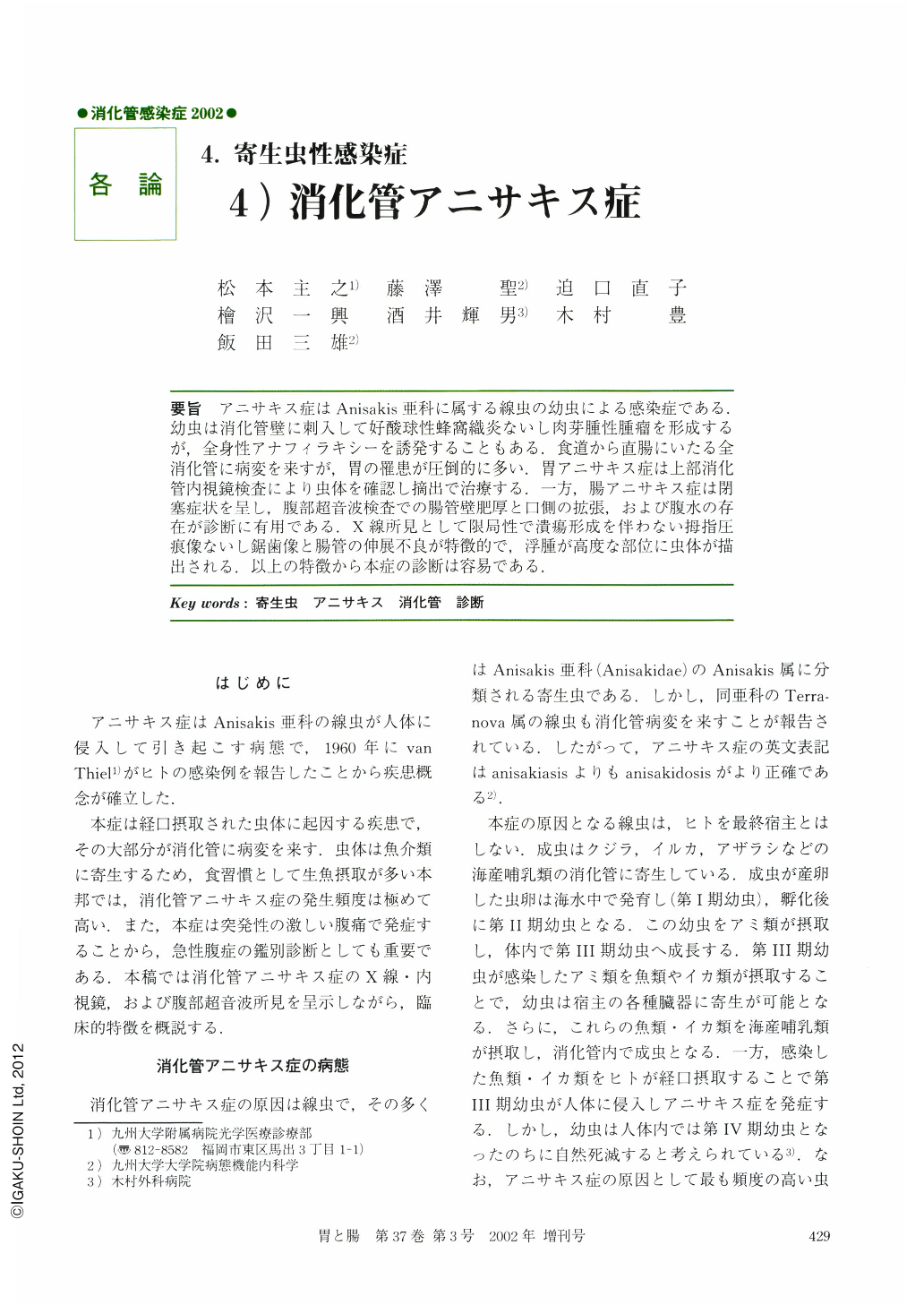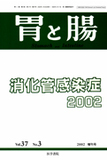Japanese
English
- 有料閲覧
- Abstract 文献概要
- 1ページ目 Look Inside
- サイト内被引用 Cited by
要旨 アニサキス症はAnisakis亜科に属する線虫の幼虫による感染症である.幼虫は消化管壁に刺入して好酸球性蜂窩織炎ないし肉芽腫性腫瘤を形成するが,全身性アナフィラキシーを誘発することもある.食道から直腸にいたる全消化管に病変を来すが,胃の罹患が圧倒的に多い.胃アニサキス症は上部消化管内視鏡検査により虫体を確認し摘出で治療する.一方,腸アニサキス症は閉塞症状を呈し,腹部超音波検査での腸管壁肥厚と口側の拡張,および腹水の存在が診断に有用である.X線所見として限局性で潰瘍形成を伴わない栂指圧痕像ないし鋸歯像と腸管の伸展不良が特徴的で,浮腫が高度な部位に虫体が描出される.以上の特徴から本症の診断は容易である.
Gastrointestinal anisakidosis is a condition induced by an infestation of nematodes which belong to Anisakidae in the gastrointestinal tract. While anaphylactic reaction and granulomatous inflammation can be induced by the infestation, acute phlegmonous inflammation is the most frequent pathology in the gastrointestinal anisakidosis. The stomach is the most frequent site of the infestation, where anisakis larvae can easily be observed and removed by endoscopy. In contrast, radiography and abdominal ultrasound are procedures useful for the diagnosis of intestinal anisakidosis. Radiographically, the intestinal involvement is characterized by intestinal stricture accompanied by thumbprinting, where the causative larvae is possibly depicted. Thickened intestinal wall and ascites are ultrasonographic signs suggestive of intestinal anisakidosis. An obvious history of the ingestion of raw fish and confirmation of gastrointestinal involvement can readily lead to the accurate diagnosis of intestinal anisakidosis.

Copyright © 2002, Igaku-Shoin Ltd. All rights reserved.


